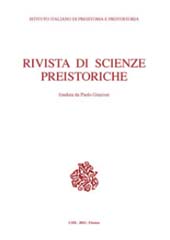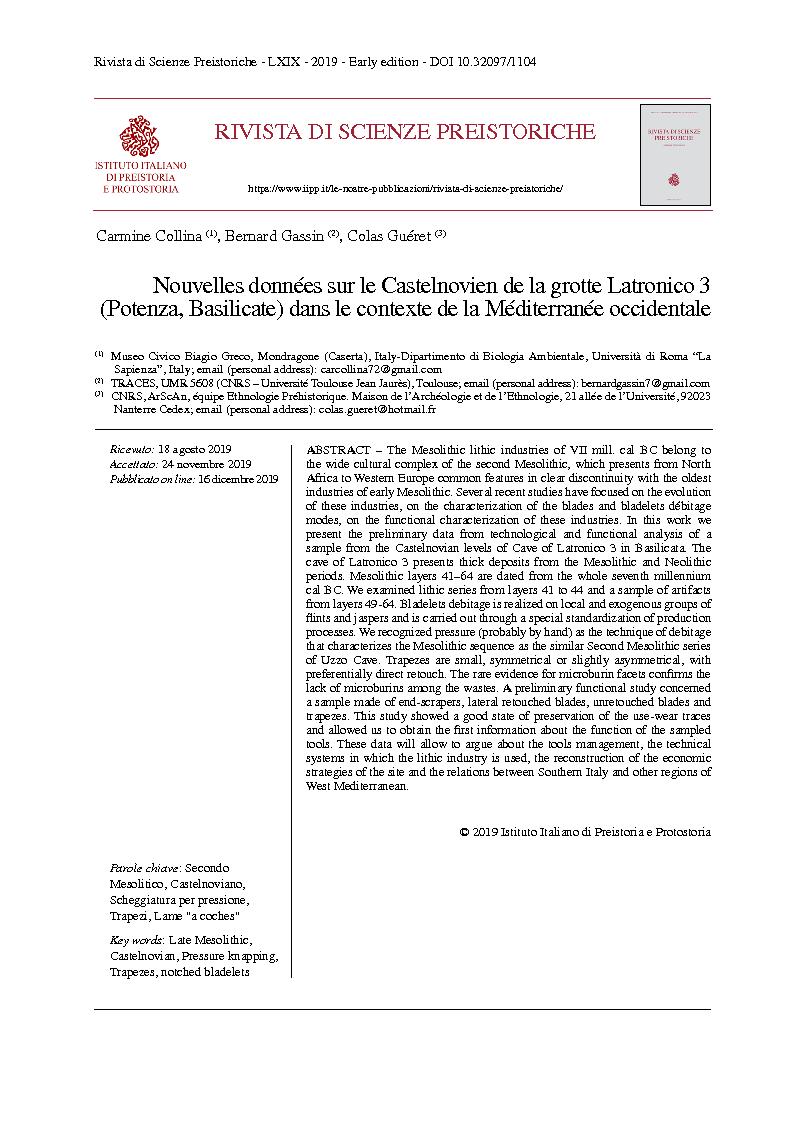Nouvelles données sur le Castelnovien de la grotte Latronico 3 (Potenza, Basilicate) dans le contexte de la Méditerranée occidentale
P. 1-18
The Mesolithic lithic industries of VII mill. cal BC belong to the wide cultural complex of the second Mesolithic, which presents from North Africa to Western Europe common features in clear discontinuity with the oldest industries of early Mesolithic. Several recent studies have focused on the evolution of these industries, on the characterization of the blades and bladelets débitage modes, on the functional characterization of these industries. In this work we present the preliminary data from technological and functional analysis of a sample from the Castelnovian levels of Cave of Latronico 3 in Basilicata. The cave of Latronico 3 presents thick deposits from the Mesolithic and Neolithic periods. Mesolithic layers 41–64 are dated from the whole seventh millennium cal BC. We examined lithic series from layers 41 to 44 and a sample of artifacts from layers 49-64.
Bladelets debitage is realized on local and exogenous groups of flints and jaspers and is carried out through a special standardization of production processes. We recognized pressure (probably by hand) as the technique of debitage that characterizes the Mesolithic sequence as the similar Second Mesolithic series of Uzzo Cave. Trapezes are small, symmetrical or slightly asymmetrical, with preferentially direct retouch. The rare evidence for microburin facets confirms the lack of microburins among the wastes. A preliminary functional study concerned a sample made of end-scrapers, lateral retouched blades, unretouched blades and trapezes. This study showed a good state of preservation of the use-wear traces and allowed us to obtain the first information about the function of the sampled tools.
These data will allow to argue about the tools management, the technical systems in which the lithic industry is used, the reconstruction of the economic strategies of the site and the relations between Southern Italy and other regions of West Mediterranean. [Publisher's text]
Ist Teil von
Rivista di scienze preistoriche : LXIX, 2019-
Artikel aus derselben Ausgabe (einzeln erhältlich)
-
Informationen
DOI: 10.32097/1104
ISSN: 2282-457X
THEMENBEREICHE
KEYWORDS
- Secondo Mesolitico, Castelnoviano, Scheggiatura per pressione, Trapezi, Lame "a coches"
- Late Mesolithic, Castelnovian, Pressure knapping, Trapezes, notched bladelets



